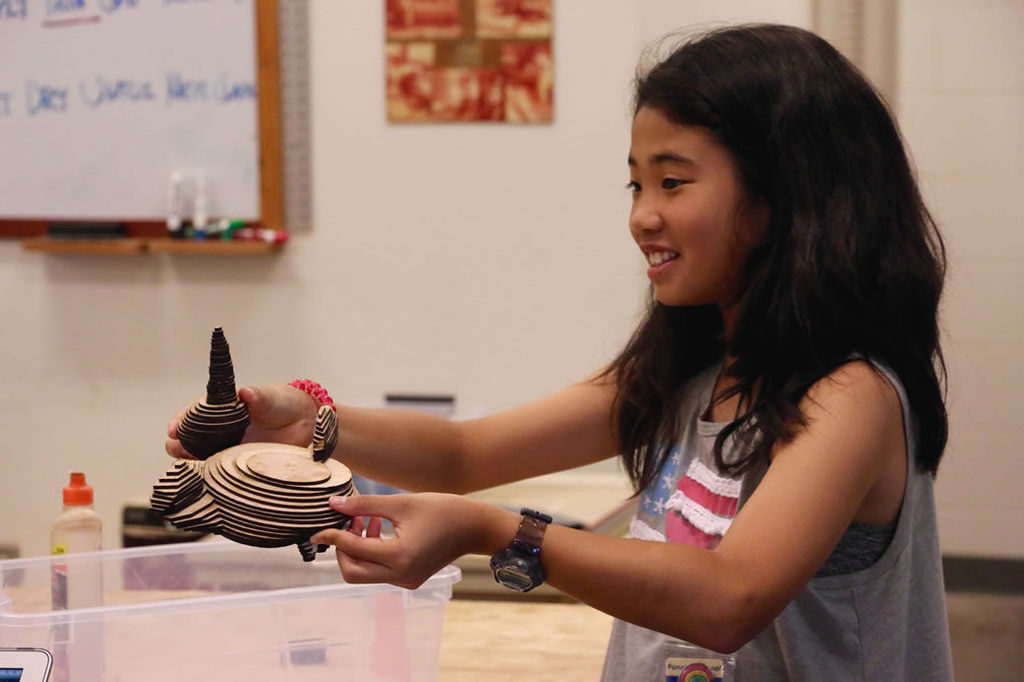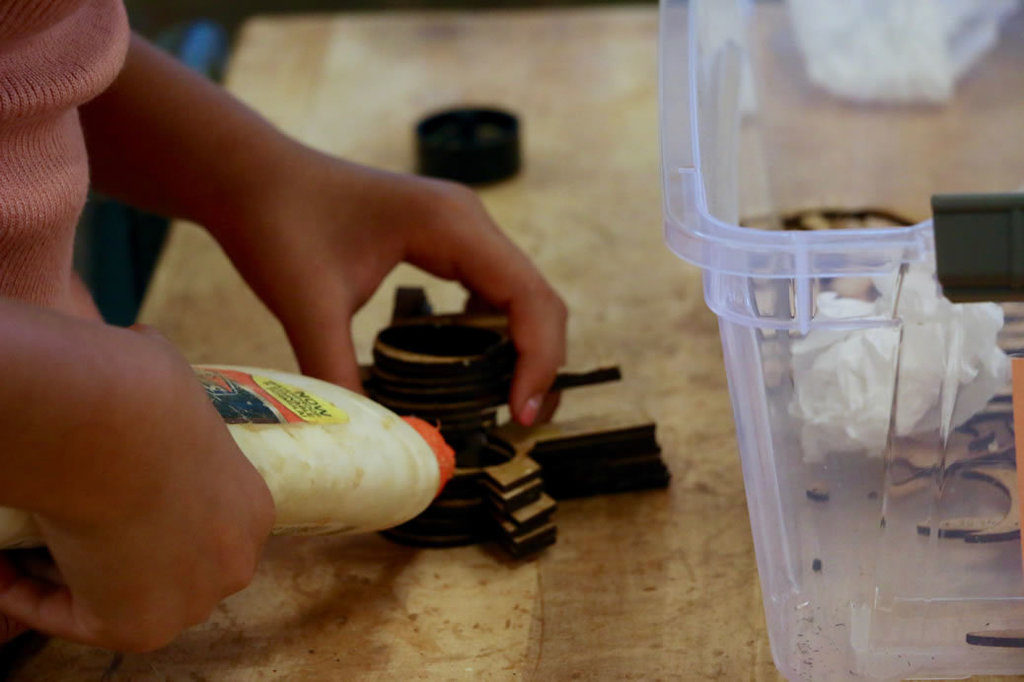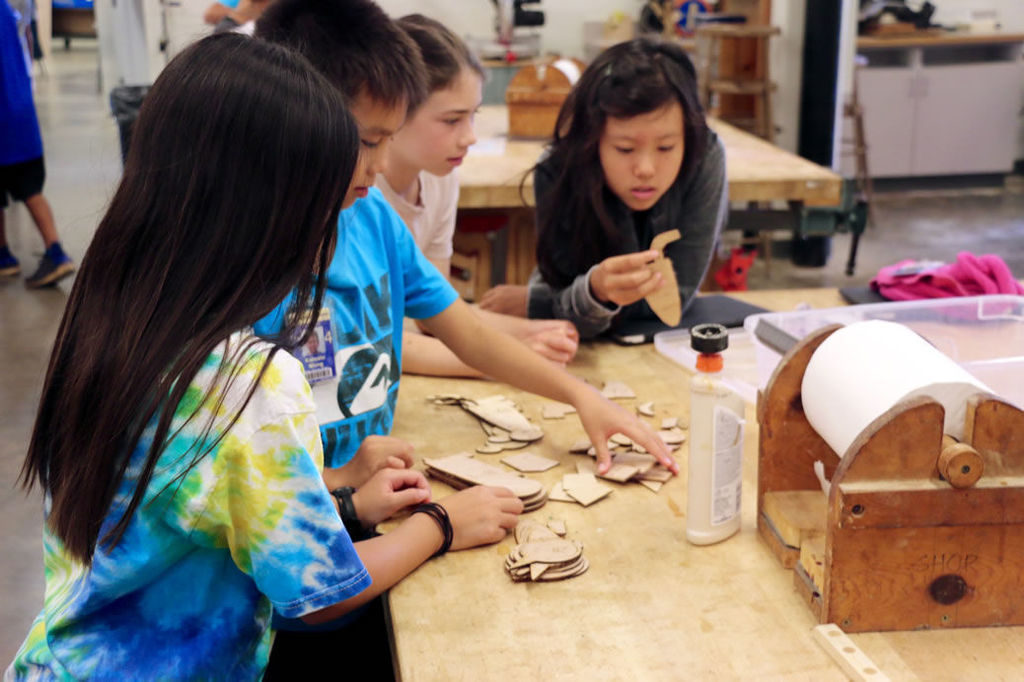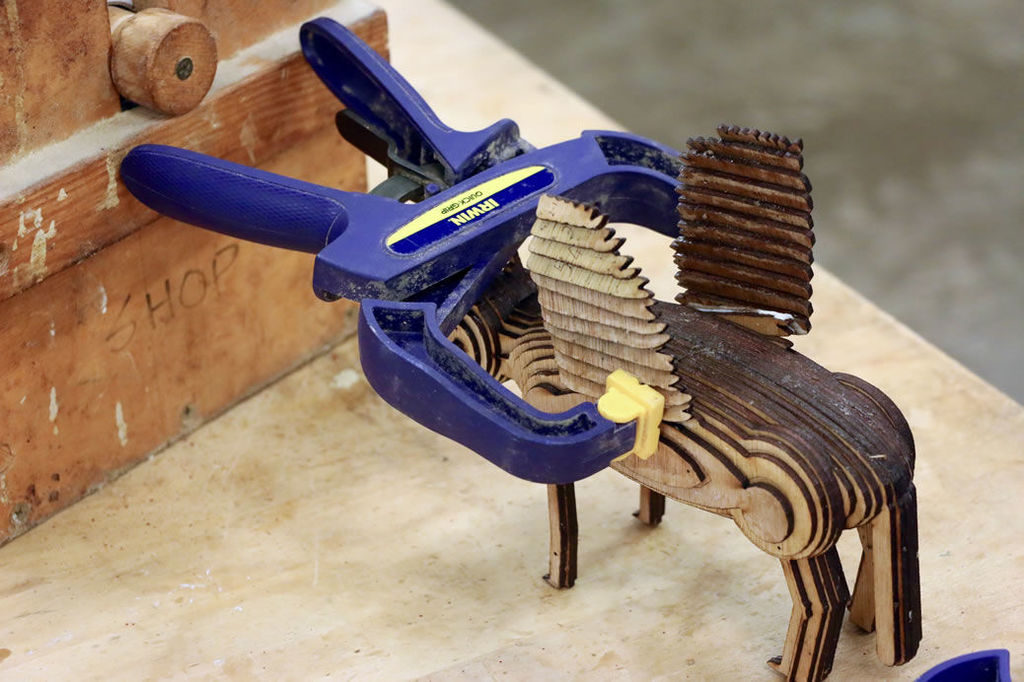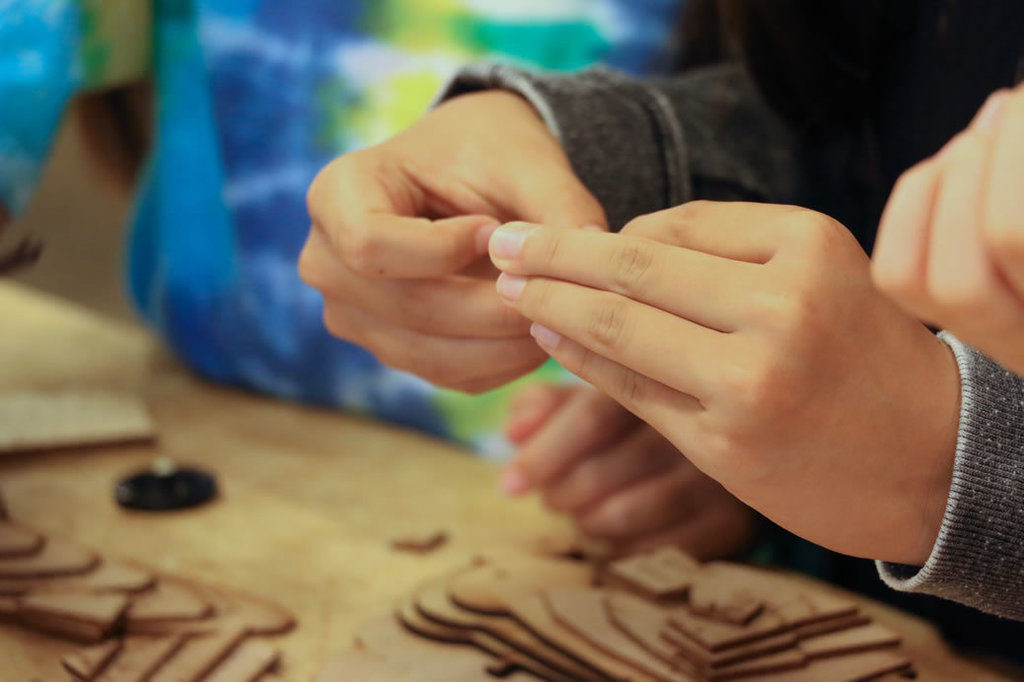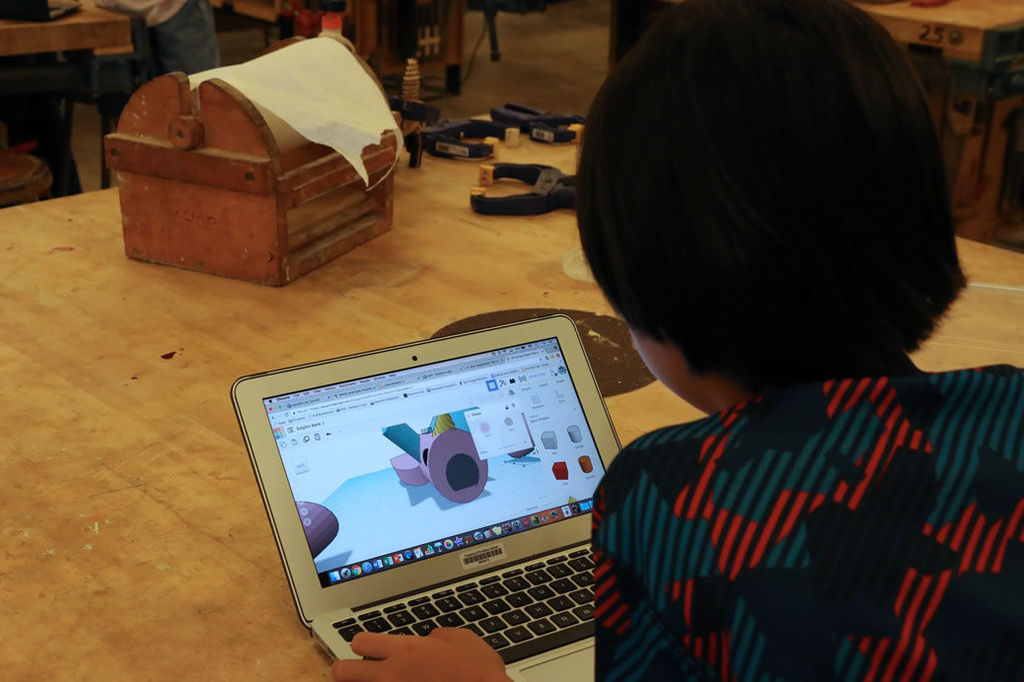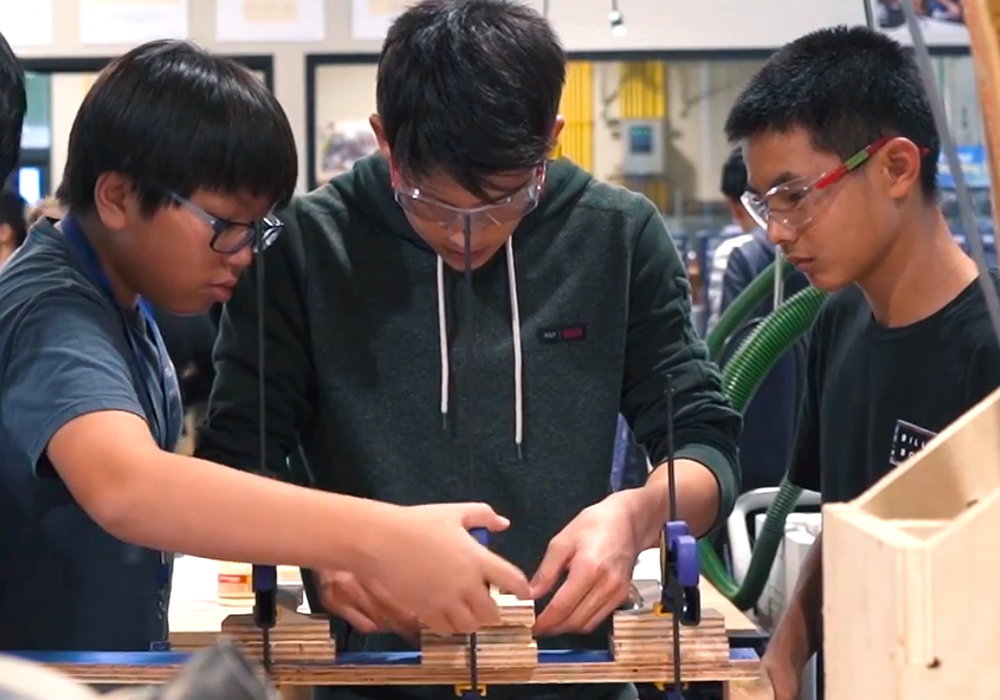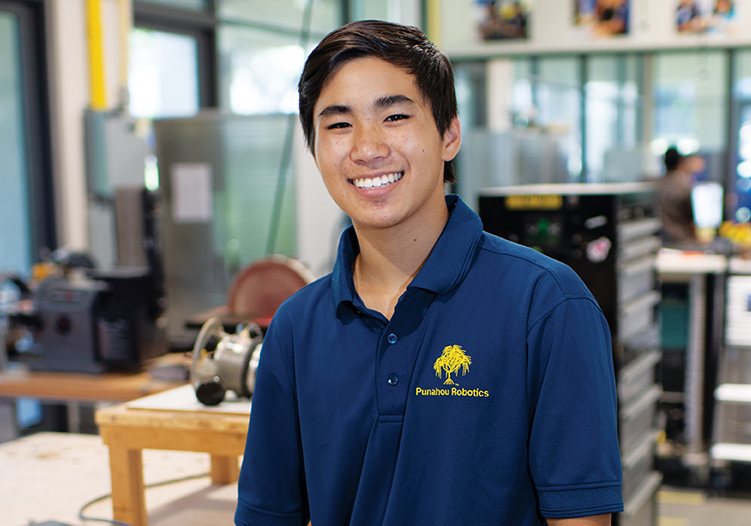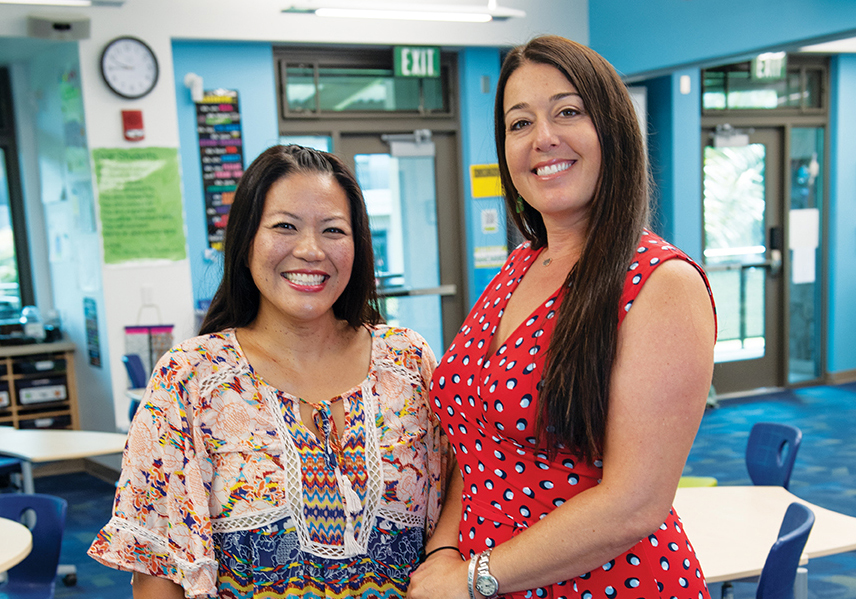
Scott Osborn ’94
The familiar scents of sawdust and wood glue hang in the air at Frear Student Shop as teams of sixth-grade students crowd around stacks of freshly-cut wood. Slowly, the students assemble and glue the pieces as a variety of 3-D creatures begin to take shape.
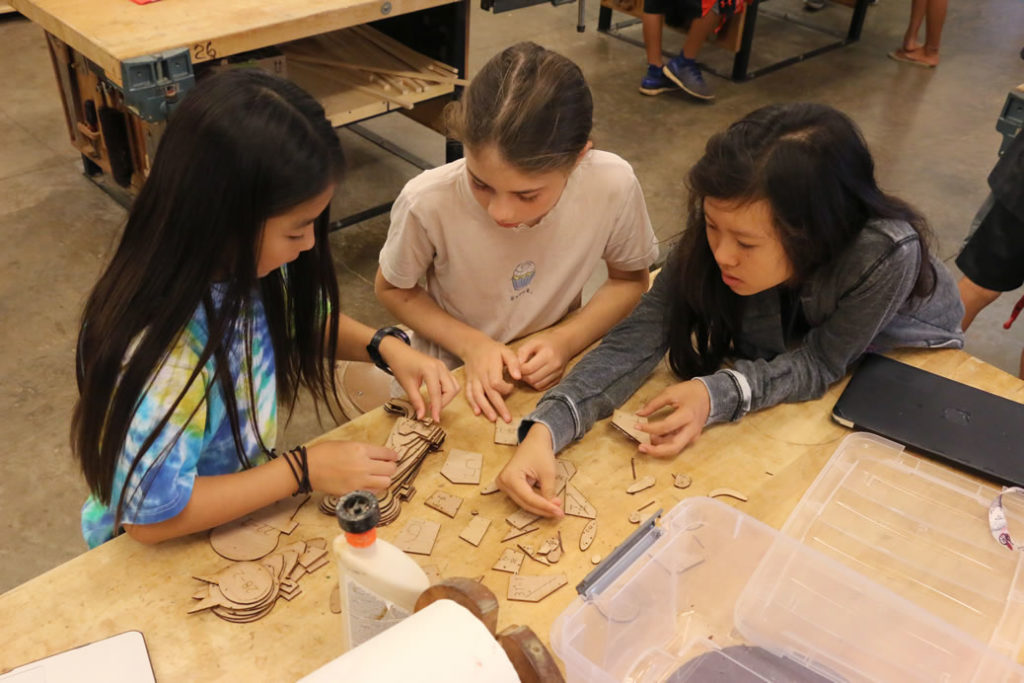
“This is an introductory project to show kids the design thinking cycle,” explained Taryn Loveman, co-department head of the Design Thinking, Makery, Engineering, Technology (D-MET) department at Punahou.
One goal of the newly formed department is to more fully integrate the five basic steps of the design thinking process – empathize, define, ideate, prototype and test – into the curriculum at Punahou. This particular project began with students conducting an empathy interview with a classmate to identify a problem that could be solved with an imaginary creature, followed by defining the classmate’s needs and ideating a solution. Students then used Tinkercad to design the creature on their laptops, and a state-of-the-art laser cutter was used to cut the pieces for the final assembly.
“After the testing phase, if it was decided that this is the final design, we would move on into the traditional world of woodcraft to create a final product,” he said. “The beautiful object isn’t the point of this project, the process is.”
Laser cutters, 3-D printers, a computer numerical control (CNC) machine and waterjet cutter are just some of the tools available across campus to support prototyping with a wide range of materials. Loveman is quick to point out that traditional woodworking skills are still being taught. “These new tools and processes are additions to the curriculum rather than substitutions,” he explained.
Loveman hopes that providing more options for creation will equip students to solve real-world problems. “My dream would be that students use design thinking to have an immediate positive impact on their community. We want colleges and universities to understand that Punahou students have a commitment to solving real world problems and a level of training that sets them apart,” he said.
